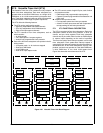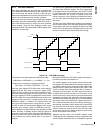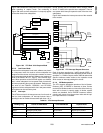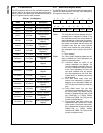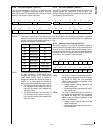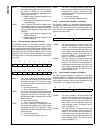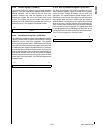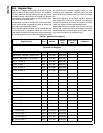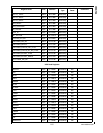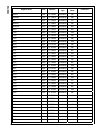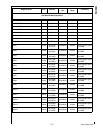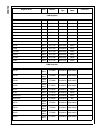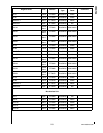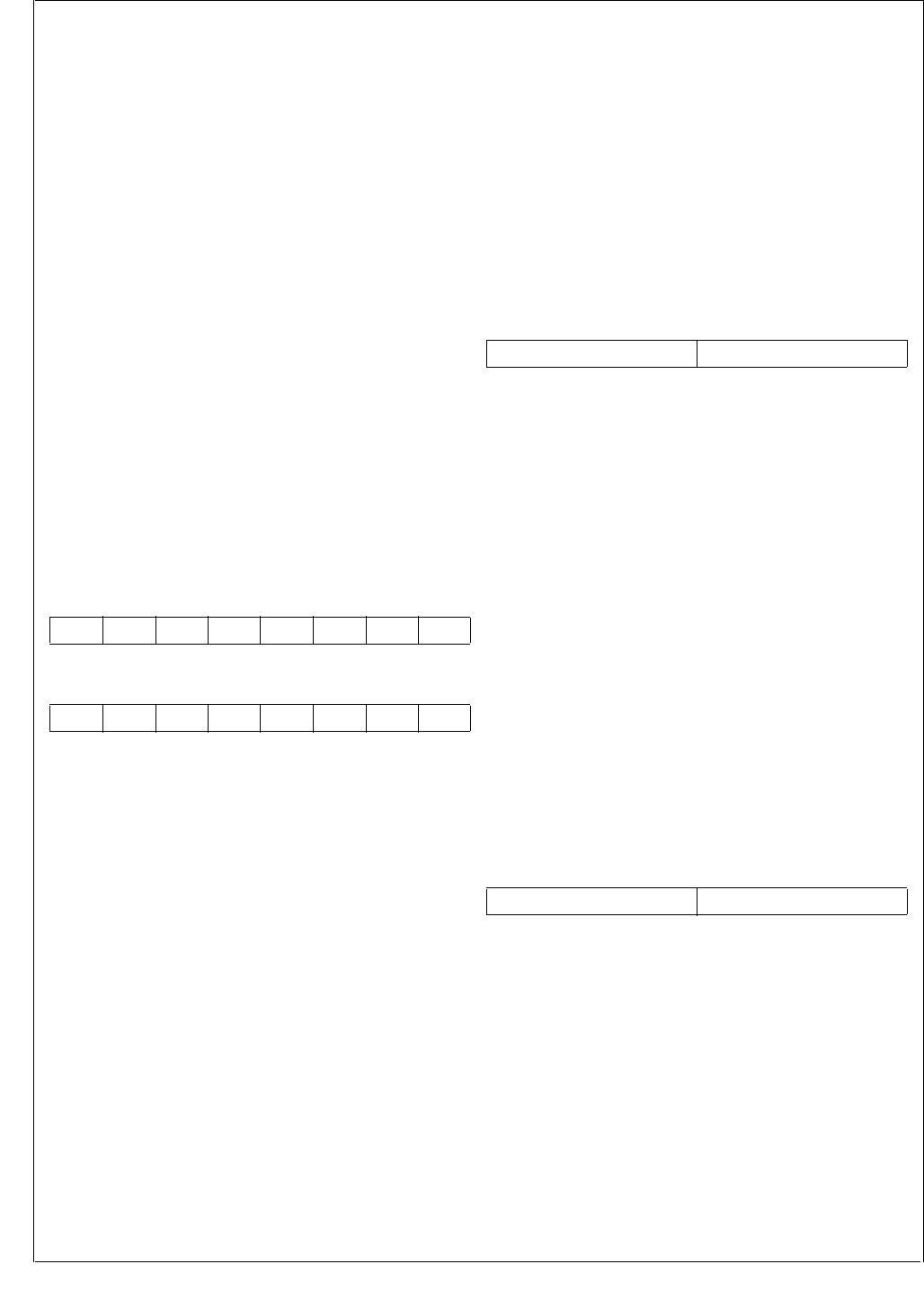
www.national.com 212
CP3BT26
IxCEN The Timer x Interrupt C Enable bit controls in-
terrupt requests triggered on the correspond-
ing IxCPD bit being set. The associated
IxCPD bit will be updated regardless of the
value of the IxCEN bit.
0 – Disable system interrupt request for the
IxCPD pending bit.
1 – Enable system interrupt request for the Ix-
CPD pending bit.
IxDEN Timer x Interrupt D Enable bit controls inter-
rupt requests triggered on the corresponding
IxDPD bit being set. The associated IxDPD bit
will be updated regardless of the value of the
IxDEN bit.
0 – Disable system interrupt request for the
IxDPD pending bit.
1 – Enable system interrupt request for the
IxDPD pending bit.
27.2.5 Interrupt Pending Register (INTPND)
The INTPND register is a word-wide read/write register
which contains all 16 interrupt pending bits. There are four
interrupt pending bits called IxAPD through IxDPD for each
timer subsystem. Each interrupt pending bit is set by a hard-
ware event and can be cleared if software writes a 1 to the
bit position. The value will remain unchanged if a 0 is written
to the bit position. All interrupt pending bits are cleared (0)
upon reset.
IxAPD The Timer x Interrupt A Pending bit indicates
that an interrupt condition for the related timer
subsystem has occurred. Table 80 on page
209 lists the hardware condition which causes
this bit to be set.
0 – No interrupt pending.
1 – Timer interrupt condition occurred.
IxBPD The Timer x Interrupt B Pending bit indicates
that an interrupt condition for the related timer
subsystem has occurred. Table 80 on page
209 lists the hardware condition which causes
this bit to be set.
0 – No interrupt pending.
1 – Timer interrupt condition occurred.
IxCPD The Timer x Interrupt C Pending bit indicates
that an interrupt condition for the related timer
subsystem has occurred. Table 80 on page
209 lists the hardware condition which causes
this bit to be set.
0 – No interrupt pending.
1 – Timer interrupt condition occurred.
IxDPD The Timer x Interrupt D Pending bit indicates
that an interrupt condition for the related timer
subsystem has occurred. Table 80 on page
209 lists the hardware condition which causes
this bit to be set.
0 – No interrupt pending.
1 – Timer interrupt condition occurred.
27.2.6 Clock Prescaler Register 1 (CLK1PS)
The CLK1PS register is a word-wide read/write register.
The register is split into two 8-bit fields called C1PRSC and
C2PRSC. Each field holds the 8-bit clock prescaler com-
pare value for timer subsystems 1 and 2 respectively. The
register is cleared at reset.
C1PRSC The Clock Prescaler 1 Compare Value field
holds the 8-bit prescaler value for timer sub-
system 1. The counter of timer subsystem is
incremented each time when the clock pres-
caler compare value matches the value of the
clock prescaler counter. The division ratio is
equal to (C1PRSC + 1). For example, 00h is a
ratio of 1, and FFh is a ratio of 256.
C2PRSC The Clock Prescaler 2 Compare Value field
holds the 8-bit prescaler value for timer sub-
system 2. The counter of timer subsystem is
incremented each time when the clock pres-
caler compare value matches the value of the
clock prescaler counter. The division ratio is
equal to (C2PRSC + 1).
27.2.7 Clock Prescaler Register 2 (CLK2PS)
The Clock Prescaler Register 2 (CLK2PS) is a word-wide
read/write register. The register is split into two 8-bit fields
called C3PRSC and C4PRSC. Each field holds the 8-bit
clock prescaler compare value for timer subsystems 3 and
4 respectively. The register is cleared at reset.
C3PRSC The Clock Prescaler 3 Compare Value field
holds the 8-bit prescaler value for timer sub-
system 3. The counter of timer subsystem is
incremented each time when the clock pres-
caler compare value matches the value of the
clock prescaler counter. The division ratio is
equal to (C3PRSC + 1).
C4PRSC The Clock Prescaler 4 Compare Value field
holds the 8-bit prescaler value for timer sub-
system 4. The counter of timer subsystem is
incremented each time when the clock pres-
caler compare value matches the value of the
clock prescaler counter. The division ratio is
equal to (C4PRSC + 1).
7 6 5 4 3 2 1 0
I2DPD I2CPD I2BPD I2APD I1DPD I1CPD I1BPD I1APD
15 14 13 12 11 10 9 8
I4DPD I4CPD I4BPD I4APD I3DPD I3CPD I3BPD I3APD
15 8 7 0
C2PRSC C1PRSC
15 8 7 0
C4PRSC C3PRSC





